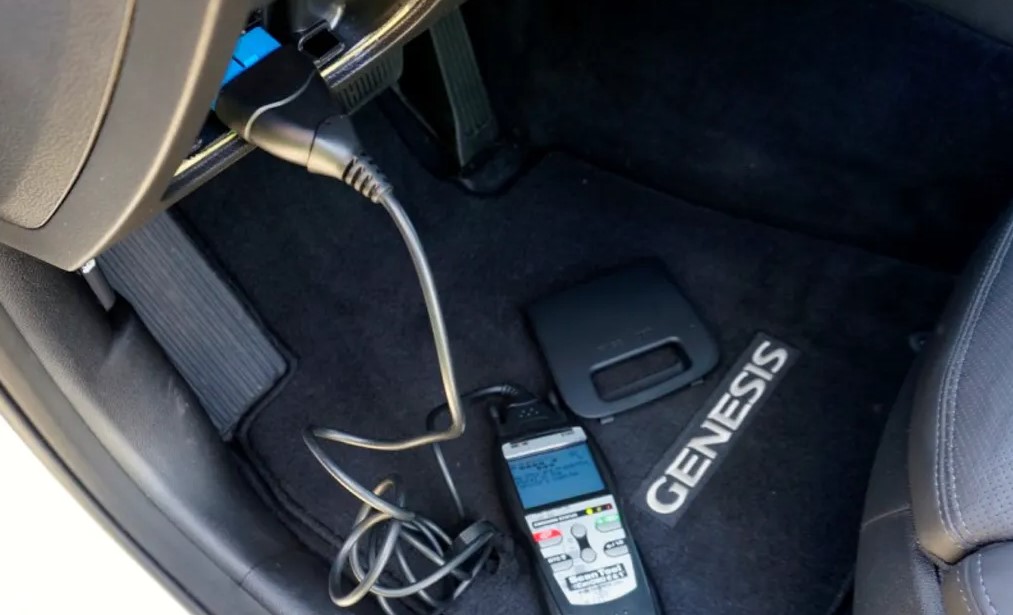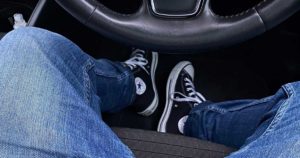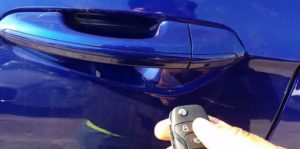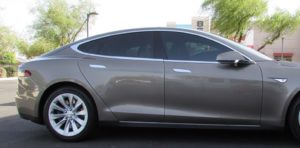The compact OBD2 scanner or on-board diagnostic is a device that diagnoses almost any issues concerning your car using a diagnostic scanner allowing external electronic to interface with your vehicle’s computer system. When your car’s sensors notice a problem, they trigger “trouble codes” that display a warning light on the dashboard. For these reasons, you may want to connect your scanner full-time.
Usually, driving with an OBD scanner plugged in most vehicles does not cause any problems. Problems only arise when you connect a device that is not for car use. In some instances, some insurance companies may require you to have an OBD2 scanner connected at all times, to send them information about your driving.
If you’re worried about draining the battery, the scanner draws out very little power and won’t be detrimental to your car. Additionally, there are scanners with an auto-sleep mode making it safe to leave it plugged in even when you aren’t using your car over a long period. It is best to contact your product’s customer service since some OBD manufacturers may have specific recommendations on how to use their scanners safely.
Does a car have to be running to use an OBD2 scanner?
Always make sure you turn your vehicle on when using an OBD2 scanner to avoid corrupting its software. You have to turn off your car first then plug in the OBD2 scanner to the OBD port. Turn your car on and wait for the scanner to boot up. If it doesn’t automatically start, press the power button.
Can an OBD2 scanner damage the ECU?
Typically, an OBD2 scanner should not damage your vehicle’s ECU. Though, plugging a scanner with frayed, damaged, or shorted-out wiring is likely to harm the ECU and other systems.
Also, this depends on the scanner you’re using. Simple scan tool modules that read OBD2 live data and report real-time information will not cause issues to your car’s engine control unit (ECU). However, some professional OBD2 scanners can cause ECU malfunctions if you drive for too long when they are connected.
To prevent this, you should get a certified scanner and also secure it in place with some adhesive tape or zip ties to avoid the wiring from damage. Follow the plug-in instructions carefully and never adjust any wiring or pins.
There are also times when it may be necessary to plug in your OBD2 scanner, such as;
- Your insurance company deems it necessary to track your driving. It makes reporting car accidents easier and also earn great discounts.
- Driving in harsh weather conditions can be very dangerous. Your battery can die without warning, or you lose pressure tires. With an OBD2 scanner, you will receive warning notifications on the dashboard.
- You can also detect why your car dies suddenly. It saves you money if you can repair the issue on your own.
Why won’t my car start after using OBD2?
There are several reasons why your car won’t start, but the OBD2 scanner you just used is not one of them. If you turn the ignition and the engine doesn’t crank, it is likely an electrical problem, and if it cranks without starting, the problem is possibly about fuel, sparks, air, or compression. An OBD2 scanner can help you detect some of the issues, which will give you an idea of how to troubleshoot them. Here are some of the reasons your car won’t start:
Trouble code memory
If your car cranks but does not start, there could be an error code in the error code memory. You have to use an OBD2 scanner to detect this error code to bypass other troubleshooting steps and go directly to the part with the error code.
Solution: Fix the arror identified by the OBD2 scanner.
Dead battery
A dead battery is one of the most common reasons why your vehicle is not starting. The battery provides electrical power to the entire car and all its systems. With a dead battery, the battery light will be on, and none of the electrical components such as lights, the radio will work.
Check this too: Best Lumbar Support for Car
On the other hand, the alternator charges the battery when the vehicle is running. If the battery does not have sufficient charge, you will not start the car or use any electrical parts. Car batteries die because;
- You left the headlights on overnight or for too long.
- A loose wire.
- The evaporated water from the components will cause low conductivity.
- The battery is merely old.
Solution: Jumpstart the car with jumper cables to test if the battery is the problem; if it works, that means your battery is dead, or the alternator is not charging the battery correctly. You have to change the battery or the alternator. If the problem persists, check for corroded cables that restrict electric flow from the battery to the car systems. To fix this, clean the corrosion around the battery terminals.
Broken or damaged ignition switch
If your battery is working accurately, you may be dealing with a defective ignition switch. Since the battery powers the headlights and dashboard, you can test a faulty ignition when the lights turn on, but the car can’t crank up.
Solution. Use a charged battery to jump the starter engine.
Faulty starter
The starter is an electric motor connected to the engine responsible for turning the engine when you turn on the ignition. A broken starter creates a clicking sound when you turn your car on, but the engine does not start.
Solution: Replace the starter.
Clogged fuel filter
If your engine cranks but the car won’t start, a clogged fuel filter may be the culprit. First, check to see if you have fuel in your tank. A miscalibrated fuel gauge will not indicate when you run out of gas.
A clogged fuel filter will prevent gas from reaching the engine. Typically, you should change the fuel filters every 9,000- 13,000 miles, but you should follow your user manual on how your fuel filter often needs a replacement.
If your car has a fuel pressure sensor, the OBD2 scanner will indicate an error code of low fuel pressure. But it is good to confirm with the manual fuel pressure gauge.
Solution: Check the wiring and relay of the pressure pump. Replace the fuel pump if it does not run but gets power. If the pressure is okay and the car won’t start, replace the clogged fuel filter and fix the fuel pressure regulator’s fault.
Poor crankshaft timing
The timing belt keeps the engine’s valves open and closed at the right interval to prevent the valves and pistons from touching. A faulty timing belt can cause irreparable damages to the engine. Using your manual, check the TDC markings for the crankshaft and camshaft alignment. Then check if their timing is correct.
Solution: Replace the timing belt. It is best if you replaced timing belts every 60,000 miles or five years.
Leaving a Bluetooth OBD plugged in is relatively safe for your car’s systems. Whether or not you choose to drive with your OBD scanner plugged in, this device comes in handy because it will save you troubleshooting time by quickly diagnosing your car problems for you. By following the above troubleshooting procedures, you will have your car working in no time.
It is also worth noting that plugging any device into your vehicle’s OBD2 port creates a risk for cyberattacks by giving external access to your car’s systems, which hackers can exploit in various ways.



